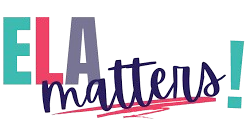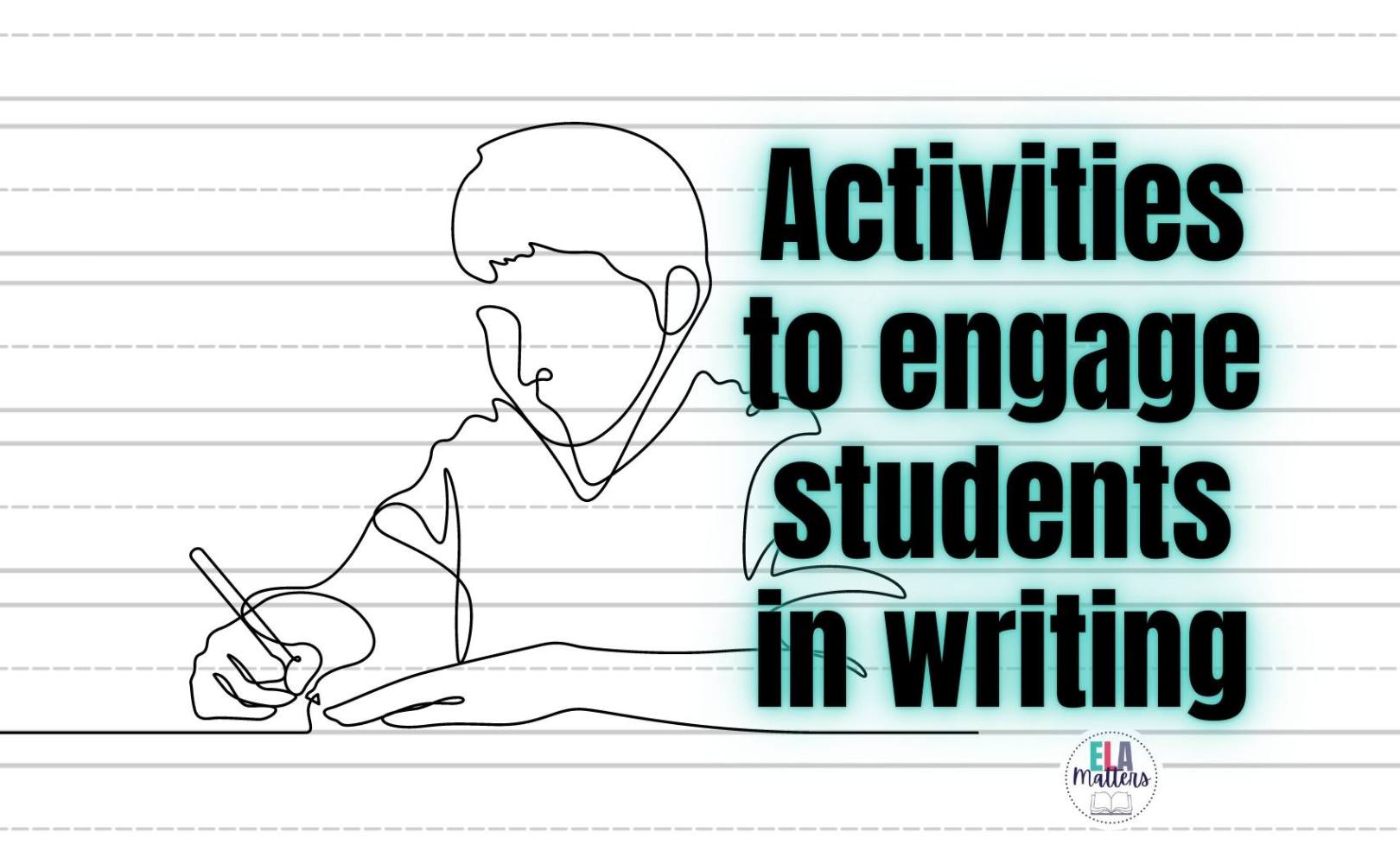Writing is an essential part of learning and it can open the doors to greater understanding, expression, and success. Unfortunately, many students find writing to be a difficult task. That is why it is important for teachers to create engaging activities to help their students become better writers. By introducing activities such as quick writes, flash fiction, infographics, roll-a-stories, or collaborative writing projects; teachers can provide stimulating outlets that allow students to express creative ideas while developing their skills in writing and communication.
The ELA Matters team has come together to provide you with ideas and helpful resources to engage your students in writing activities. We’ve pooled our ideas, insights, and expertise so that you can empower your students!
Write Flash Fiction
Opportunities for short writing are ideal according to Lesa from SmithTeaches9to12. Options such as quick writes or flash fiction can get students to put pen to paper or fingers to keyboards with less pressure!
Flash fiction is one of Lesa’s students’ (and Lesa’s!) favorite writing activities. Flash fiction is a work of fiction that is a few hundred words or less.
To get students to write flash fiction, introduce or review elements of fiction–character, Freytag’s pyramid, conflict, etc.– and provide examples to students. Use examples such as 55-word stories from Steve Moss as mentor texts for students. They can read and analyze structure and content before embarking on writing their own short, short stories.
This creative writing exercise is useful in a variety of ways:
- to review elements of fiction
- to incorporate new vocabulary
- to explore genre before a particular drama or novel study unit
- to practice sentence structure or other grammar lessons
- to change focus and bridge a gap between units
- to keep as a sub-plan for when you take your personal time off!
If you want the whole shebang ready to go for you, check out this resource that walks teachers and students through the whole process
Using Mentor Texts for Inspiration
Jen from The Supported Teacher recommends using mentor texts for teaching writing:
“Mentor texts are one of the most powerful ways to teach writing because they offer students both a model to follow (in other words, build in scaffolding) as well as inspiration for what to say.”
Mentor texts can range from a single sentence to a picture book to a song lyric or an entire excerpt. Jen has found the most success using mentors that can be read and analyzed within a class period so that you can shift your focus back to writing before the class ends.
Using a mentor text to teach writing is helpful because it asks students to zero in on a specific aspect of the writing that is working particularly well – and then invites students to immediately practice that technique or skill in their own writing.
When students get to be the author, they become better readers too! They start caring more about what an author is doing and why because they experienced firsthand the challenge of writing and the thoughtfulness that goes into writing something beautiful.
Click here to read more about how Jen uses mentor texts in the secondary classroom!
Incorporate Visual Aids
Marissa from Creative Classroom Core has found that incorporating visual aids into her lessons can be extremely helpful to encourage middle school writers.
Marissa has found writer’s block to be a very real thing, and sometimes her students can really struggle with coming up with ideas for what to write about. She has found that incorporating visual ideas like photographs, illustrations, and videos into her lessons allows students to draw inspiration to help them craft their own stories. Sometimes all it takes is a quick glance at a photograph or illustration to really get the creative juices flowing!
In addition, incorporating visual aids helps to break up the monotony of writing instruction, and is a great way to keep students engaged.
The best part? Marissa loves that adding visual aids to her lessons does not require a ton of prep work on her part. A quick YouTube or Google image search can provide a wealth of resources to inspire young learners!
Click here for more of Marissa’s writing tips for engaging middle school writers!
Characterization
For creative writing, Katie from Mochas and Markbooks likes to give students plenty of opportunities to focus on characterization.
One method to help students flesh out their characters is a character profile that they fill out, detailing aspects of their protagonists all the way from nicknames to religious beliefs. Students tend to become more invested in their characters after really “getting to know them” through the creation of a profile, and therefore take more pride in their writing. Katie has found that when students go through this process, they know their characters as well as they know themselves, and the writing flows much easier.
Another important outcome of creating a character profile is for students to fully understand their character’s motives, desires, and beliefs. Through this understanding, tackling major aspects of the plot, like the conflict and its resolution become easier to write when students know how their character would respond.
For more creative writing ideas, check out this post all about sources of inspiration for narratives.
Collaborative Stories
One thing Carolyn from Middle School Cafe knows is that students love to work together (especially if it’s their friend) and while she can’t allow that all the time, she likes to incorporate partner work where she can.
Collaborative stories are the perfect activity to allow students to work with partners and get them writing. Collaborative stories are a fun and engaging activity for students as it encourages teamwork, problem solving, and creative thinking.
Collaborative stories are easy to implement and require very little prep. Divide the class into in pairs (or groups of three, but keep the groups small), and provide them with a picture that will serve as the setting for their story. Each partner then begins a story based on the picture given and after a few minutes, partners switch stories and continue writing for another few minutes before switching again. Do this as often as needed or until students finish their stories.
Collaborative stories are a quick, fun Friday activity that encourages participation and lots of laughs! At the end of this writing, each student ends up with two unique stories.
Images and Infographics
Similar to Marisa, Miss K love to use images and infographics to help her high schoolers work on their writing in quick bursts and to help generate discussion. She will create a Do Now centered around the NYTimes “What’s Going on in this Picture” or “What’s Going on in this Graph.”
Miss K will use the current weekly post from the site, or she will go back and find one connected to the current class topic. When starting new research topics, Miss K has found that using images and graphics can help students think outside the box instead of starting with what is just in their heads. They often need help to do so —using images to introduce a topic and to generate writing has strengthened class discussion and the student’s research.
Once students complete the writing, Miss K will have them turn and talk and then join a larger group discussion to dissect what they see in the image/graphic. It is a low-risk, high-reward scenario because there is no wrong answer. The fun part – checking back at the end of the week to see how close the student analysis was once the photo background/caption is revealed!
Roll A Story
Students often have trouble figuring out what to write when given an assignment. How about a fun activity that gets students writing and practically eliminates the “I don’t know what to write about” blues?
Samantha from Samantha in Secondary loves to use Roll a Stories with her students!
What is that?!
The concept is simple. Choose the overarching theme you’d like your students to write about. For example, a suspenseful story, a mystery, a fairytale, a story about a season, etc. Come up with some simple options for the story elements you want students to include. Get some dice from your local dollar store. Then, get writing!
Students love the unpredictability and trying to get all of the pieces to “fit” into the story.
To read more about how Samantha uses this fun creative writing activity for routine writing and more, click here to read a longer blog post all about it.
You can also see all of her Roll a Story resources by clicking here. There are plenty of options to choose from, plus a free resource to test!
Happy writing!
Student Choice in How to Publish
“Begin with the end in mind,” is a phrase drilled into every pre-service teacher’s brain, but also one that Natayle Brown from Hey Natayle likes to refer back to when teaching writing:
“So often with writing units, we tend to have our students jump from the planning stage right into the blinking cursor of a draft. It’s not until we’re nearing the end of our drafts or staring at the word DEADLINE that we even utter the word “publishing.” And when we do, it may or may not be tied directly to the pressure of a final grade. The whole concept of publishing is almost a complete afterthought, right?”
With your next writing unit, engage your writers by beginning with the end in mind and FIRST brainstorming the final product. How do your students want to see themselves as a published author? Will it be through a magazine article? A short story? A comic, documentary, podcast, or audiobook?
Giving students a choice in how they publish their work will connect them more meaningfully to their purpose for writing – and as a result, engagement will skyrocket.
Just be sure to add a few days to the end of your unit for time to work on publishing. Then, wrap it up with a fun Author’s Celebration and provide a moment for students to share and honor one another’s work.

